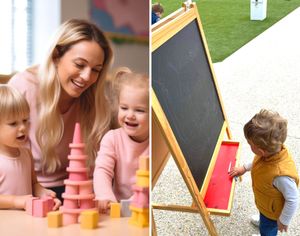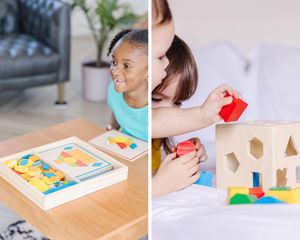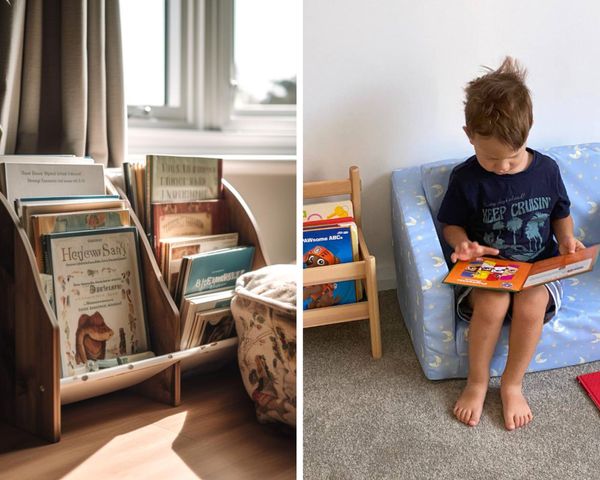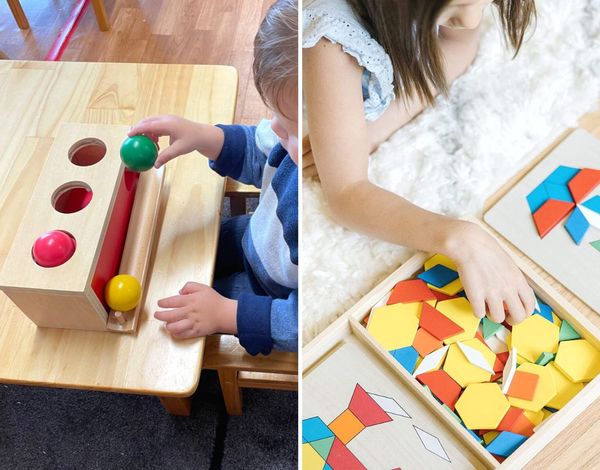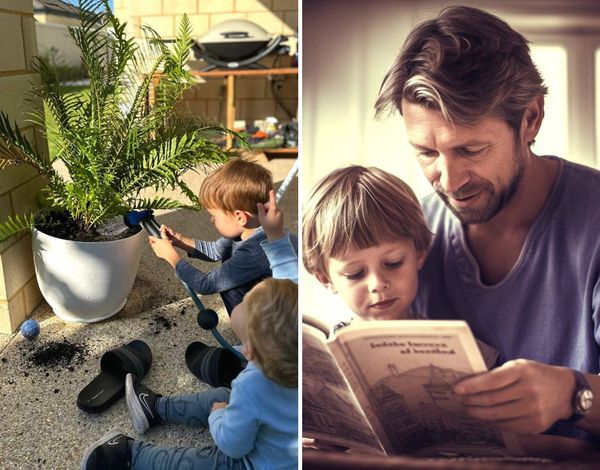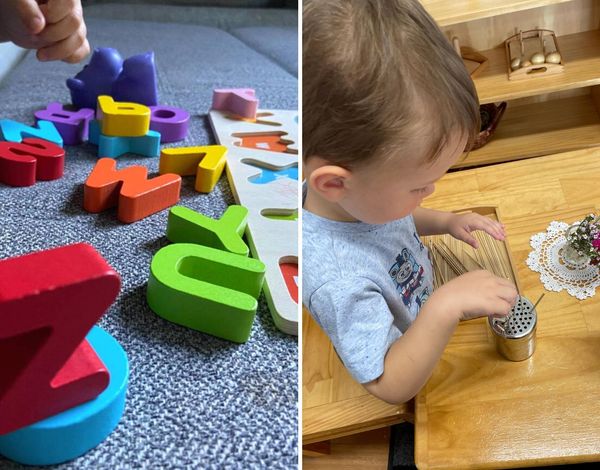Have you ever watched your child at play and wondered how that natural curiosity could be channelled more effectively? Picture this: it's a regular Tuesday afternoon at your Montessori home, and instead of the usual whirlwind of activity, you find your child independently exploring their surroundings, their curiosity and creativity in full swing.
Indeed, the Montessori method, often associated with the Montessori school environment, is not confined to classrooms. As one half of a parenting duo (that is to say, me and wife) who have recently started incorporating Montessori principles into our home, I can vouch that this powerful approach can be harnessed to create a nurturing environment right in your living room, transforming the way your child's education unfolds from home.

Over time, I learned that adapting Montessori principles to the home wasn't about a complete overhaul, but rather about making mindful changes to the layout and organization of our living spaces. The aim? To cultivate an environment that spurs exploration and fosters independence, instilling responsibility, and empowerment in your child's daily routine.
Did you know that, according to the American Montessori Society, children who learn in a Montessori environment show increased independence, self-regulation, and social skills? These are the tangible benefits of living the Montessori principles at home.
So, are you ready to illuminate a brighter path for your child's development and well-being by becoming a certified Montessori parent (as long as you're ok with a fake certification from me)? Excellent! In this comprehensive guide, we will explore:
- The foundations of the Montessori method and principles, and how they inspire a child-centered approach to learning.
- Steps to creating a Montessori environment at home, including the concept of the prepared environment, the importance of child-sized furniture and utensils, and the role of Montessori materials and toys.
- The essence of Montessori parenting techniques that foster your child's independence and growth.
- Tailored Montessori activities for different age groups—from infants to toddlers and preschoolers—ensuring age-appropriate learning.
- Crucial safety measures and baby-proofing tips for a secure Montessori home.
- The multi-faceted benefits of Montessori at home, spanning physical, cognitive, emotional, and social dimensions of your child's development.
- My personal recommendations for finding Montessori resources, ensuring that the Montessori method is accessible to all.
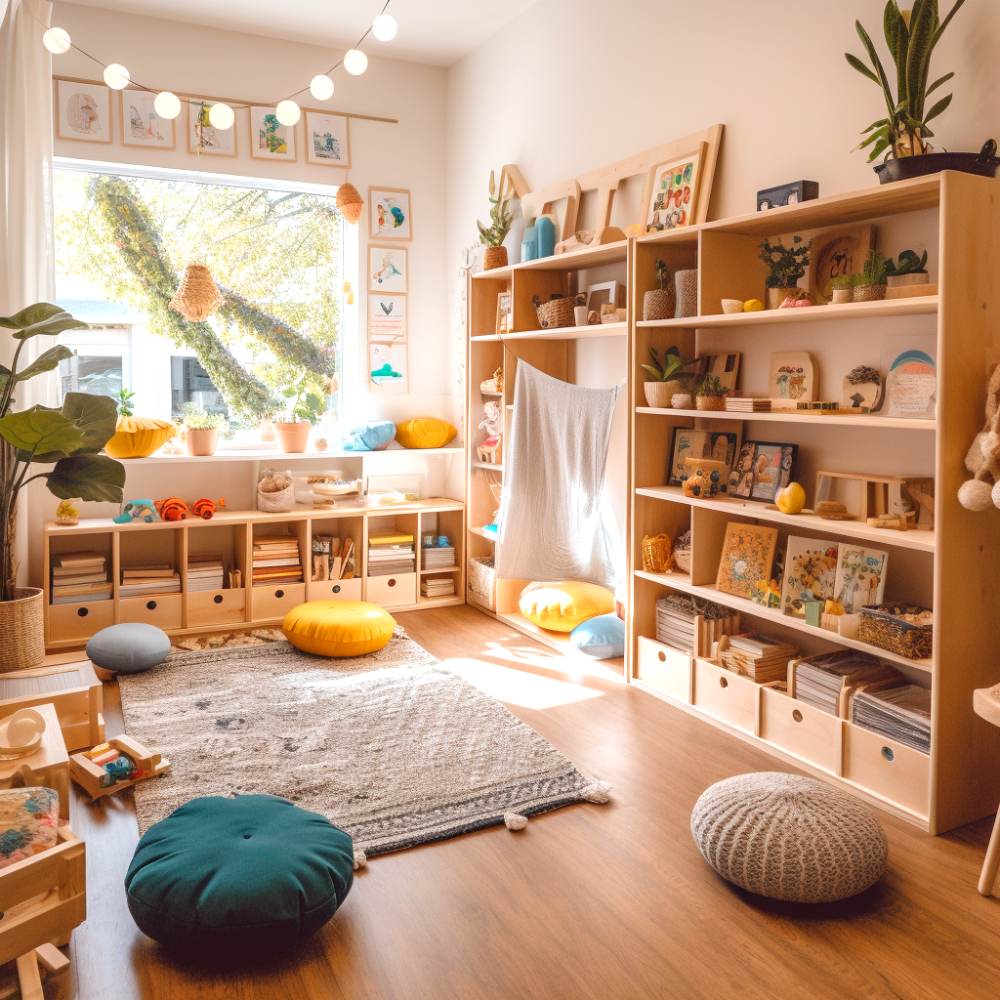
Join me as we embark on this enlightening journey, unraveling how you can create a Montessori-inspired home— a place that fosters lifelong learning and empowers children to steer their own education.
Montessori Method and Principles
The Montessori Method, an ingenious brainchild of Dr. Maria Montessori, serves as an anchor for an educational approach that champions independence, exploration, and respect for a child's natural curiosity. By weaving Montessori principles into your home, you provide a solid foundation for your child's development and prepare them for a future filled with a love for learning.
Here's how you can infuse the essence of Montessori into your home environment:
- Embrace the Absorbent Mind: Montessori education recognizes a child's remarkable ability to soak up information from their environment like a sponge. This principle, known as the 'absorbent mind,' suggests allowing children to learn at their own pace, guided by their intrinsic interests. It's all about following the child's lead in their Montessori education.
- Create a Prepared Environment: Start your Montessori at home journey by crafting a 'prepared environment'. This Montessori principle suggests organizing your living space to foster order, independence, and self-motivation. It includes assigning a place for everything, so children learn where items belong. More importantly, it means providing low, accessible shelves and child-sized furniture, enabling children to independently interact with their environment
- Promote Practical Life Activities: Integrate practical life activities into your daily routine. These can range from everyday chores like laundry and meal preparation to cleaning. Involving children in these tasks not only feeds their curiosity but also refines their motor skills and nurtures their sense of responsibility and independence.

- Incorporate Montessori on a Budget: Montessori for parents needn't be an expensive venture. Many engaging activities and learning opportunities can be crafted using simple, affordable materials, making Montessori principles accessible to all families.
Incorporating the Montessori Method at home is a transformative step towards supporting your child's growth and igniting their innate curiosity. A prepared environment, active participation in practical life activities, and respecting the child's unique pace of learning are the cornerstones of a successful Montessori home.
And remember, creating a stimulating, educational Montessori atmosphere doesn't require a hefty budget. Instead, it calls for simplicity, accessibility, and unwavering respect for the child's unique needs and interests.
Creating a Montessori Environment at Home
The Prepared Environment
A prepared environment is essential for a successful Montessori experience at home. This environment should be calm, simple, and organized with the use of natural materials such as wood and clay. It should also provide opportunities for practical life activities, be free from distractions, and focus on the aesthetics of the space.

Child-Sized Furniture and Utensils
In a Montessori home, child-sized furniture is a key element. Start by providing low shelves for easy access and a floor bed so your child can experience freedom of movement. Also, ensure your space includes child-sized utensils, tables, and chairs so that your child can easily participate in everyday activities.
Montessori Materials and Toys
Montessori materials and toys are vital in creating the right environment for your child's learning. These items should cater to the five senses and should primarily be made from natural materials, like wood. For instance, wooden toys can help develop motor skills, cognitive skills, and imagination. Additionally, providing a variety of materials targeting different developmental stages is crucial to striking the right balance in your child's Montessori space.
Here's a list of some popular Montessori materials you can introduce at home:
- Climbing Structures: Wooden climbing structures, like Pikler triangles, promote gross motor skills, balance, and coordination. Check out our guide to the best climbing structures for your home Montessori setup.
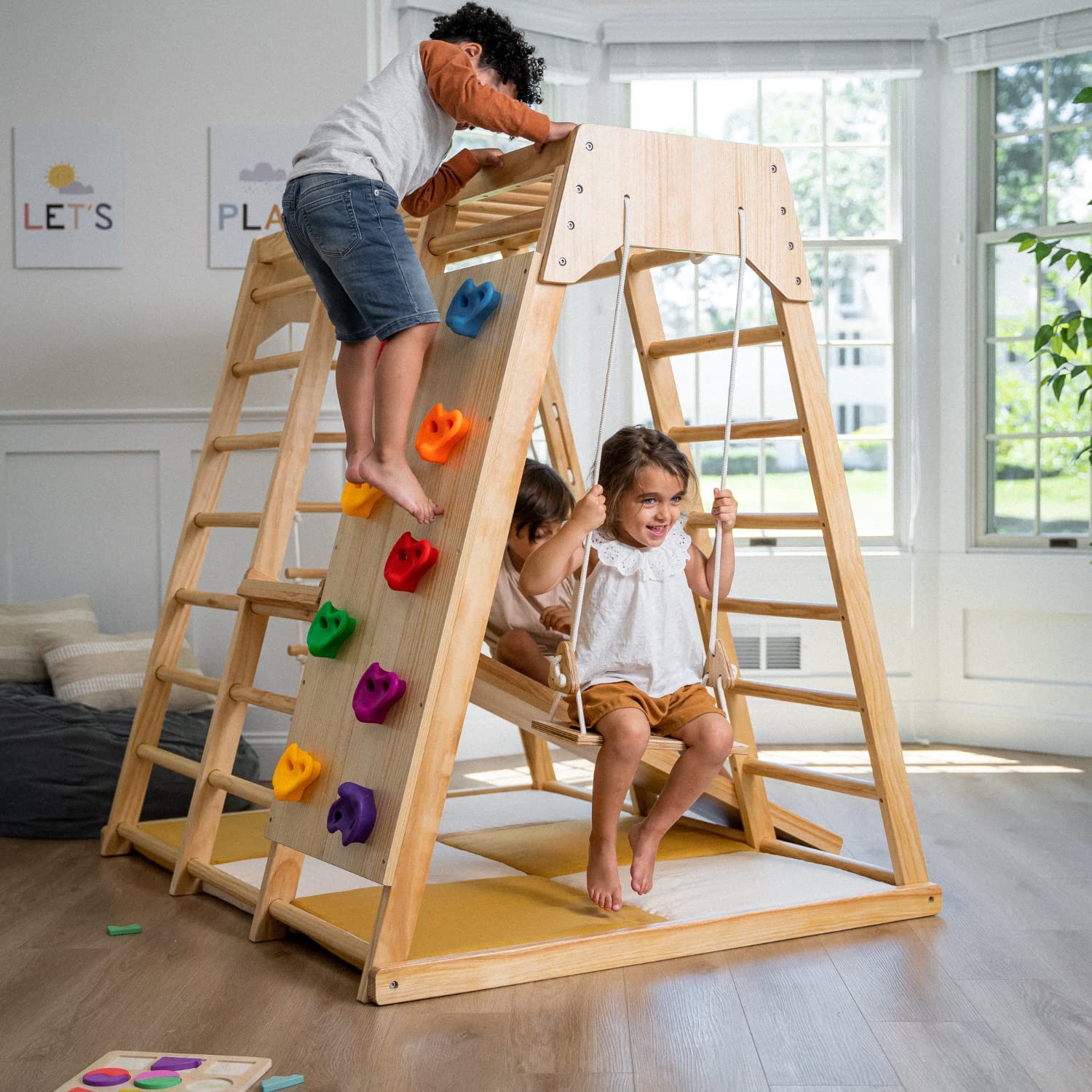
- Open-Ended Toys: Montessori wooden toys are made from natural materials and encourage open-ended play, critical thinking, and fine motor skills development. Find inspiration in our collection of Montessori-approved toys.
- Sensory Play Spaces: A Montessori play gym supports your baby's cognitive and physical development through sensory stimulation and encourages independent exploration.
- Accessible Book Storage: A low, open bookshelf, like a Montessori bookshelf, allows your child to easily access their favorite books and encourages a love for reading. Find out how to choose the best book storage solutions for your home.
- Practical Life Materials: Items such as child-sized brooms, dustpans, and watering cans can be used to teach children valuable life skills, fostering independence and responsibility.
- Sensorial Materials: These materials help children refine their senses and develop observation skills, critical thinking, and problem-solving abilities.
- Language and Math Materials: Introduce materials that focus on letter and number recognition, phonics, and basic mathematical concepts to support your child's academic growth.
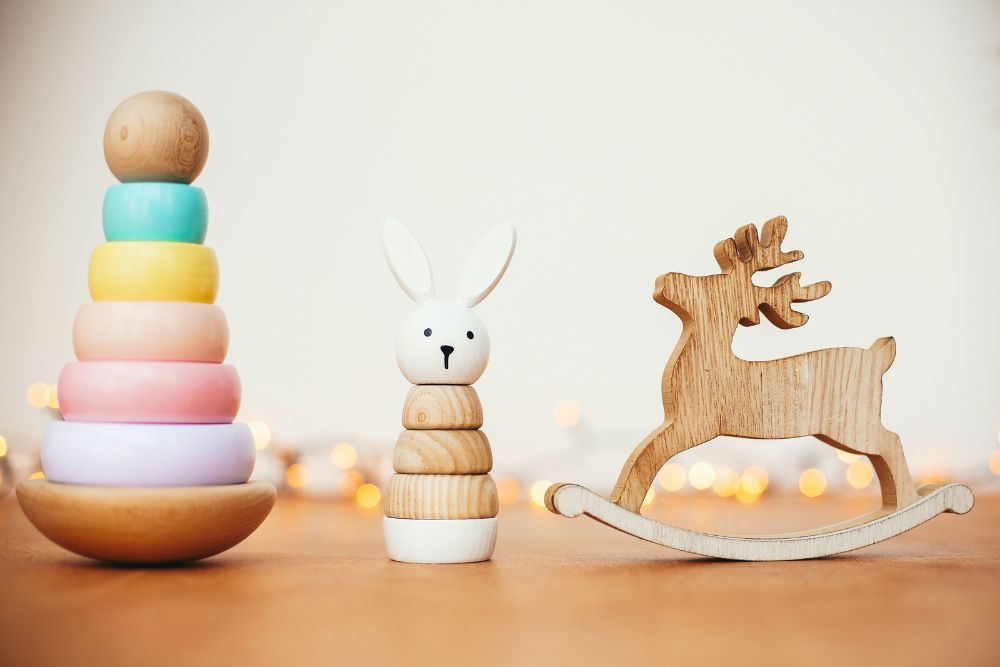
Crafting the ideal Montessori environment in my home meant preparing a space thoughtfully designed for my child's development. From laying out the 'prepared environment' to selecting child-sized furniture, utensils, and relevant Montessori materials and toys, each step towards building a successful Montessori space called for my unwavering attention to detail and commitment.
But, let me share a crucial piece of insight from my experience - a Montessori home isn't static; it evolves as your child does. I've learned to keep a close watch on my child's changing needs, fine-tuning the environment to retain its balance and nurturing essence. This adaptability is what keeps a Montessori home vibrant welcoming, and conducive to learning.

Montessori Parenting Techniques
Montessori parenting is centered around respecting the child's individuality and autonomy. By designing a suitable environment and incorporating principles such as independence, life skills, and intrinsic motivation, parents can provide a wholesome learning experience at home.
One of the critical aspects of Montessori parenting is organizing the environment to suit the child's needs. This involves creating accessible layouts and designated spaces for activities like:
- Reading and writing
- Art and craft
- Practical life skills
- Mathematics and science
- Sensorial exploration
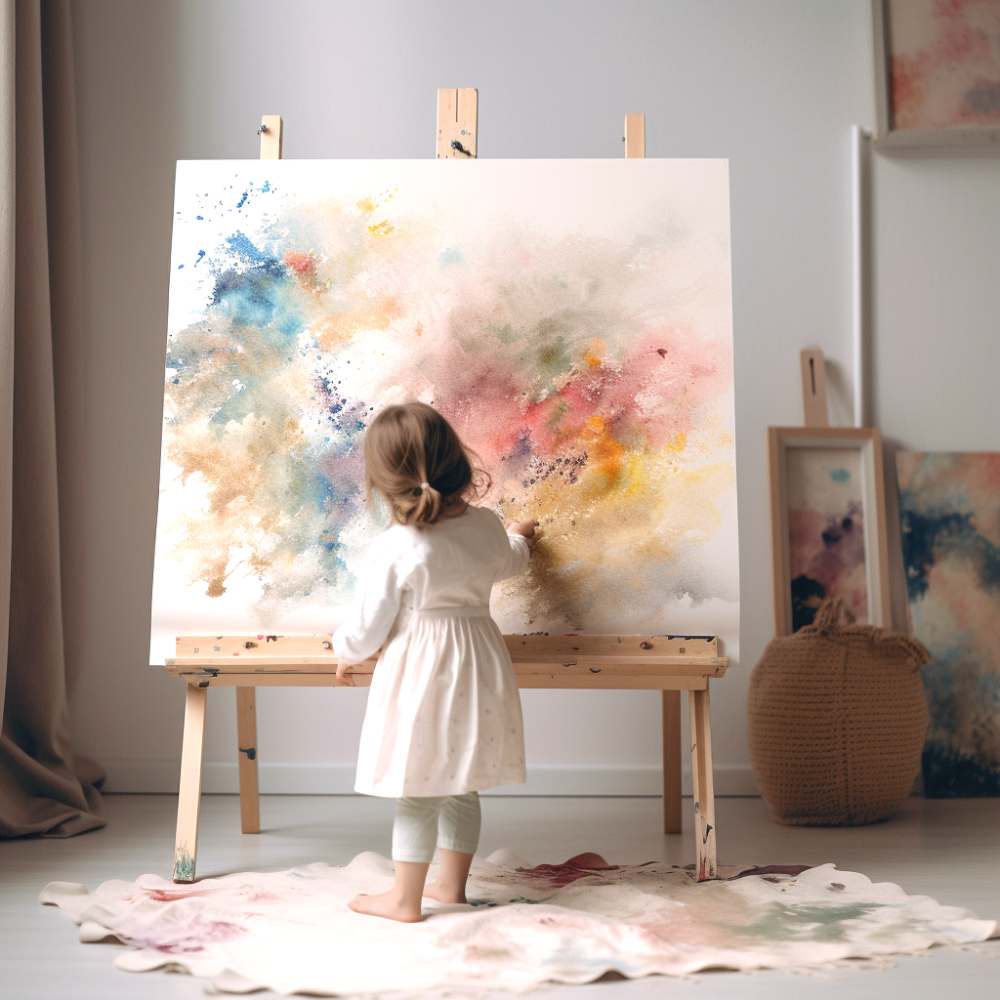
Parents and caregivers should also focus on life skills as part of Montessori education. For instance, allow your child to participate in daily tasks such as:
- Preparing meals
- Setting the table (for most parents, this bit would seem like dark sorcery, but i assure it can be achieved)
- Sorting laundry
- Watering plants
- Cleaning up the workspace
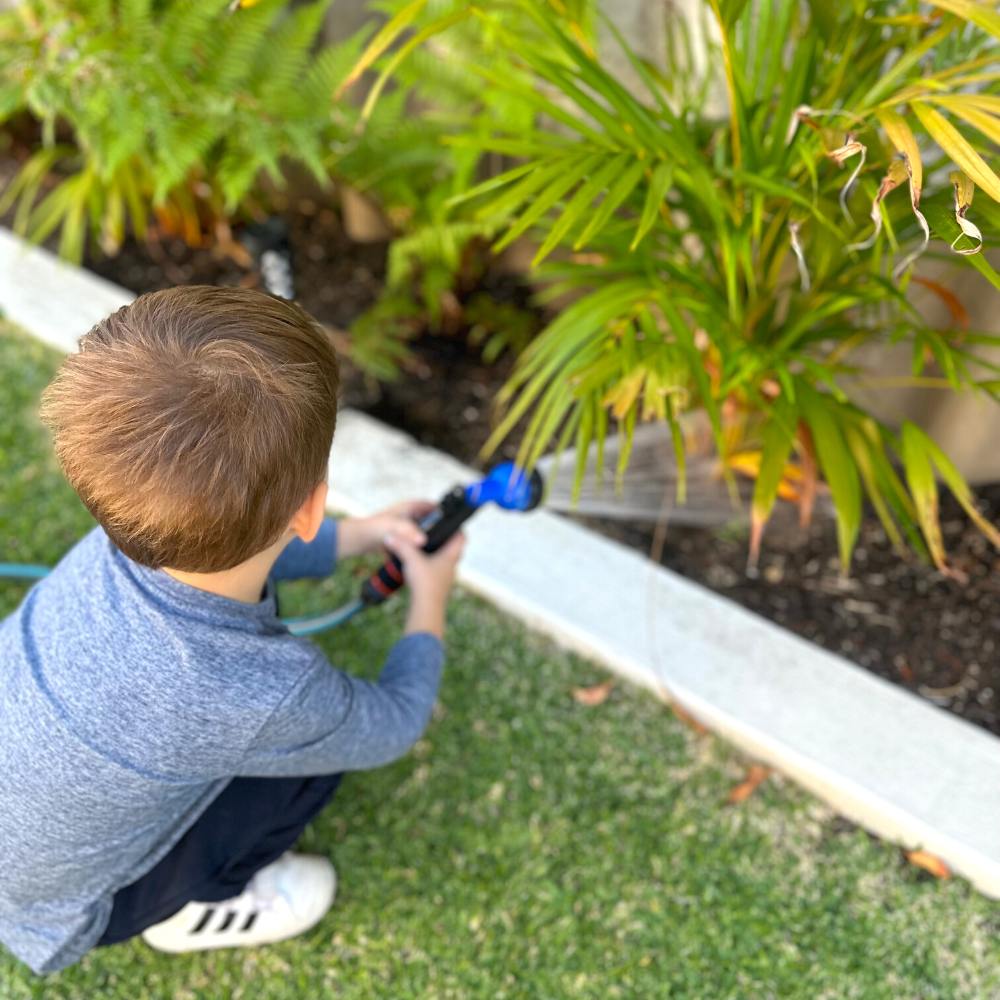
Another significant factor in Montessori parenting is supporting the child's concentration on chosen activities. It is essential to minimize distractions, guide them gently, and let them work at their own pace. This builds a strong foundation for learning.
Furthermore, parents need to emphasize inner motivation and self-confidence in their child's learning journey. Avoid extrinsic rewards, and focus on fostering an environment in which achievements are celebrated for the sake of personal growth and satisfaction.
I've witnessed firsthand how potent and transformative Montessori techniques can be in nurturing a child's development, regardless of their age. It's a bit like setting up a grand stage for a play that celebrates lifelong learning. An environment meticulously tailored to suit the unique needs of your child, from the youngest to the older children. This space is far more than just a child's bedroom, it's a whole universe where they become brave explorers on an exciting journey of discovery.
One of the many joys of being a Montessori parent, for me, has been focusing on life skills - those critical tools that equip our young ones for the vast world outside. Whether they are younger children just beginning their Montessori journey or school-aged children navigating more complex tasks, it's about nurturing concentration, kindling that inner flame of motivation, and witnessing as they transform into independent, confident, and well-rounded individuals.
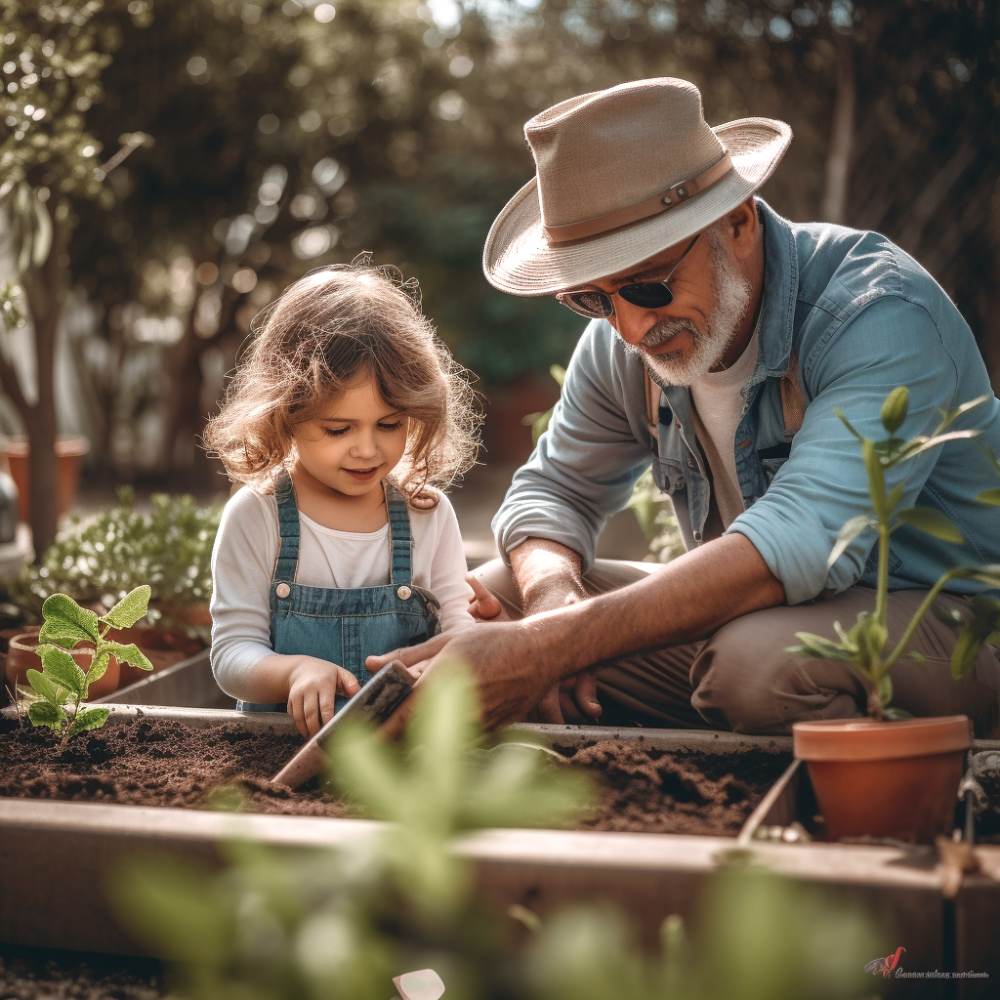
But there's a secret ingredient to this recipe: maintaining a respectful and nurturing atmosphere. It's akin to moving in rhythm with their ever-changing interests and needs, leading and following in this beautiful dance of shared educational experience. Just as the dance evolves with the rhythm, so must we, as parents, adapt. It's this mutual journey, this shared rhythm of learning and growing, that truly encapsulates the essence of Montessori at home.
Montessori Activities for Different Age Groups
Infants
During infancy, the focus lies on creating a Montessori bedroom designed for development and independence. Some Montessori activities for infants can be:
- Offering mobiles to develop visual tracking and concentration
- Providing simple, natural toys to encourage sensory exploration
- Safe crawling and movement spaces to develop gross motor skills
- Black and white cards for visual stimulation
Toddlers
As children grow into toddlers, Montessori at home broadens to involve basic practical life activities including:
- Dressing and undressing, promoting fine motor skills and independence
- Cleaning up toys and books, teaching responsibility and organization
- Jumping, climbing, and dancing to develop gross motor skills
- Sorting and matching items for sensory exploration
Some key suggestions are:
- Create a child-friendly kitchen area for tasks like spreading crackers, peeling/cutting fruits, and dishwashing
- Set-up washing activities for outdoor toys, reinforcing cleanliness and practical life
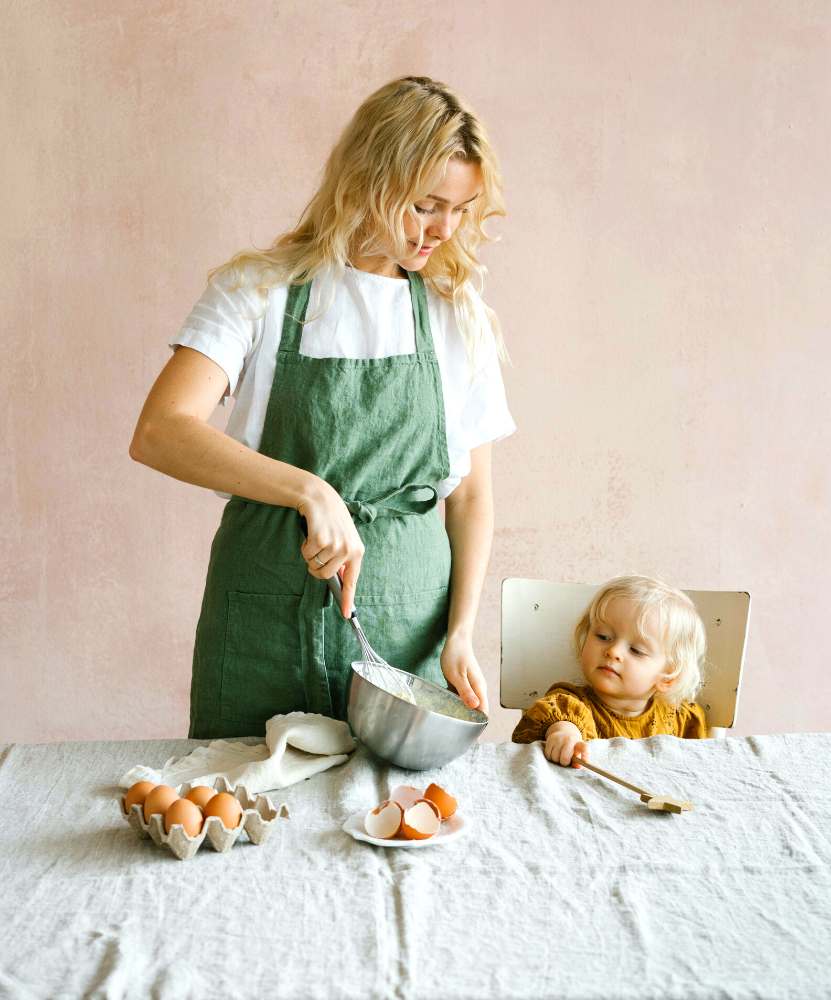
Preschoolers
For preschoolers, Montessori at home introduces more complex educational activities designed to engage their cognitive and creative skills. Some common Montessori activities are:
Language development:
- Letter recognition games
- Name-writing practice
- Storytelling and re-telling
Mathematics:
- Number recognition and counting games
- Shape sorting and pattern arrangements
- Introduction to basic addition and subtraction
Learning science:
- Nature walks and exploration
- Gardening and plant identification
- Basic astronomy concepts
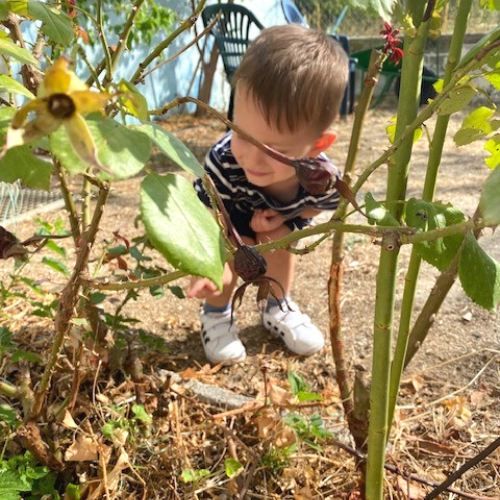
I have to say, Montessori activities at home and the principles, is what drew me to Montessori as a whole. We were already loosely incorporating similar activities but not purposefully, or without an understanding of the true benefits. It just felt right, you know. But when I started researching it, it became evident that we were heavily aligned with the Montessori philosophy.
Montessori activities is where the magic of learning truly comes alive, regardless of whether we're dealing with older kids or school-aged explorers or even young children.
Think of these activities as the golden threads that weave together the tapestry of your child's Montessori education. Tailored to their age and interests, these activities are more than just games - they are opportunities to develop motor skills, practical life skills, and cognitive abilities. In the theatre of a Montessori home, these activities are the compelling plot that keeps the audience (our little ones) captivated.
But let's not forget the heart of the Montessori method: following the child. It's about respecting their individual needs, their unique pace, and their ways of exploring the world. And this is the beauty of Montessori at home - it's a stage set for the grand play of learning, where the script unfolds uniquely for every child. So, let's keep the spotlight on their curiosity and love for learning, and watch as they blossom beautifully in their own time and way.
Safety and Baby-Proofing in a Montessori Home
Creating a safe environment for your child is paramount in a Montessori home. It's essential to strike a balance between providing opportunities for independent exploration and ensuring your child's safety. Baby-proofing is a crucial aspect of a Montessori home, allowing your child to have the freedom to move and explore within safe boundaries.
One strategy is to create "Yes" spaces in your home. These are areas specifically designed to be safe for your child to explore without constantly hearing "no" or being restricted. You can create a Yes Space by carefully selecting and organizing furniture, toys, and materials to minimize potential hazards.
The below video from Hapa Family is a favourite and does a wonderful job of explaining "yes" spaces, but also showing a tour of their lovely home and how they have gone about creating it - give it a watch!
Here are some tips for baby-proofing a Montessori home:
- Use plug covers and cord runners to protect your child from electrical hazards.
- Secure heavy furniture with safety straps to prevent tipping accidents.
- Install doorknob covers on doors that lead to potentially dangerous areas.
- Place child-safe cleaning supplies, such as clothes and hand brooms, at your child's eye level to encourage their participation in household chores.
Drawing from my background as an engineer, where safety protocols were paramount in high-risk situations, I bring the same level of meticulousness to creating a Montessori environment at home. Believe me, when it comes to my children, safety is never compromised - it tops the list of priorities.
Creating "Yes" spaces - areas where our children can freely interact with their surroundings - is central to Montessori in the home. However, this doesn't mean compromising on security. Rather, it's about careful planning and choosing children's toys that are safe, engaging, and developmentally appropriate.

Remember, as our little ones grow and their interests diversify, our Montessori environments should grow and evolve too. But at the heart of it all, our unwavering commitment to safety must remain steadfast, creating a home where exploration and learning happen with the utmost confidence and security.
Benefits of Montessori at Home
Physical
Implementing Montessori principles at home can aid in your child's physical development. It encourages them to be involved in their daily routine and surroundings, giving them ample opportunity to develop fine and gross motor skills. Simple tasks such as self-care and dressing allow children to gain a sense of independence, which contributes to their physical growth.
Cognitive
Montessori at home fosters cognitive development by presenting thought-provoking, engaging activities that are both educational and fun. The method emphasizes meaningful activities designed to meet each child's unique learning style and pace. This focus on individualized learning can help children develop critical thinking, problem-solving, and decision-making skills.
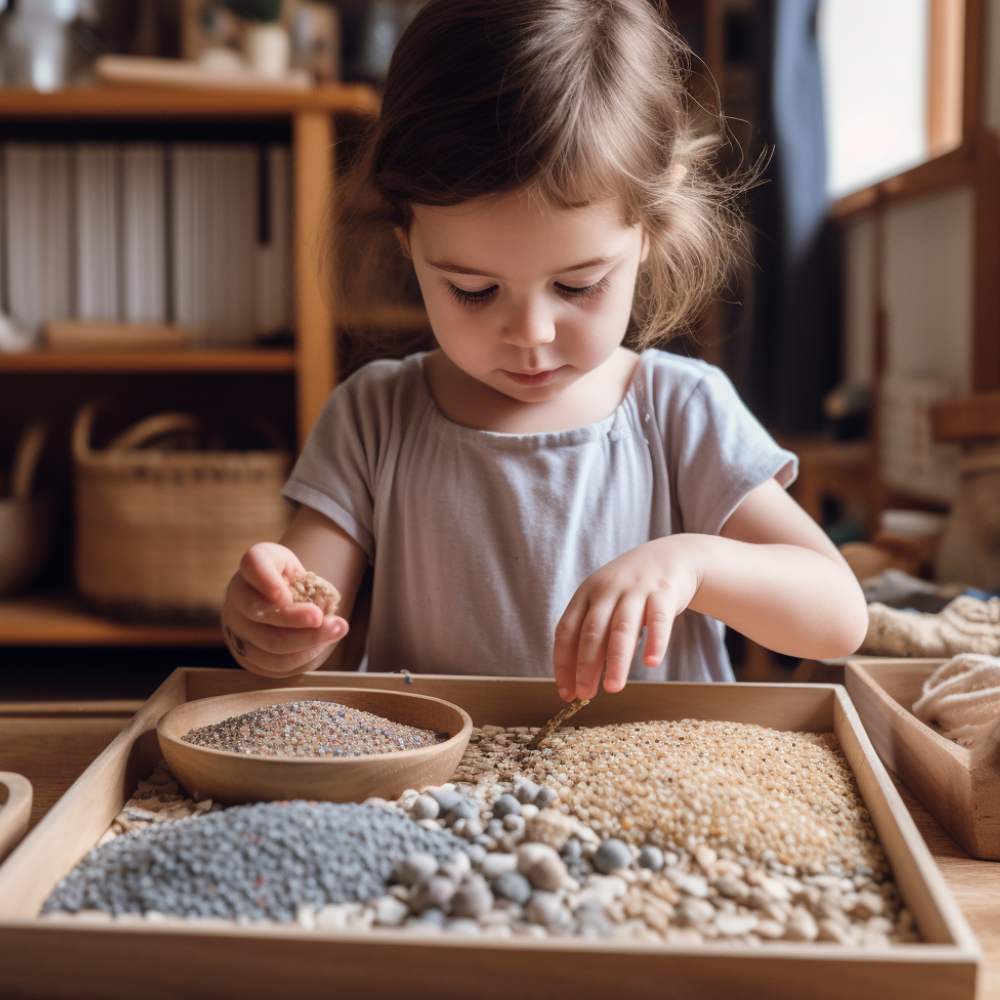
Emotional
Emotional growth is an essential aspect of Montessori at home. The Montessori environment fosters a respectful atmosphere where children can freely express their emotions and feelings. By actively listening to their children and respecting their choices, parents create a strong emotional bond and promote emotional intelligence.
Social
Montessori at home is an excellent way to promote social development. Establishing a harmonious home environment that matches the child's Montessori class can help them learn to interact with others, develop empathy, and build strong relationships. Such an environment encourages communication, collaboration, and understanding among family members and peers.
Incorporating Montessori principles at home supports children's growth in various aspects, including physical, cognitive, emotional, and social development. By creating a home environment that aligns with their Montessori class, parents can offer an enriching, well-rounded educational experience, fostering independence and lifelong learning skills. Remember, the key to the successful implementation of Montessori principles at home lies in actively listening to your child, respecting their choices, and providing engaging, meaningful activities tailored to their unique learning style.
Finding Montessori Resources
In my journey as a Montessori parent, I've often found that people are under the impression that incorporating Montessori at home is an expensive endeavor, and only reserved for Montessori schools. However, I'm here to dispel that myth and share some practical strategies that can make Montessori from home an affordable reality (not just in this article, but the entire content on this web site).

Budget-friendly Resources
Finding budget-friendly Montessori materials is absolutely possible, and I've found a few fantastic sites that offer a wonderful selection of cost-effective options. Some of our go-to resources include:
I love these sites for their diverse and budget-friendly Montessori materials that adhere to the principles we aim to uphold in our home.
In my quest for affordability, I've also discovered the joy of DIY Montessori materials and activities (this is how I pursue my wood working passion, without annoying my better half too much). There's something incredibly satisfying about creating tailored learning materials for my children. Not only does it save money, but it also allows for a high degree of personalization, catering to my child's unique interests and developmental stage. Watch out for my upcoming series of articles where I'll be sharing some of our favorite DIY Montessori activities and how you can recreate them at home on a budget.
Moreover, I've taken the time to review some fantastic Montessori products to help you make informed decisions. You can check out my reviews on:
- Montessori Puzzle Maps
- Montessori Toys for 3-Year-Olds
- Montessori Toys for 2-Year-Olds
- Montessori Wooden Toys
- Montessori Play Gym
- Best Pikler Triangle
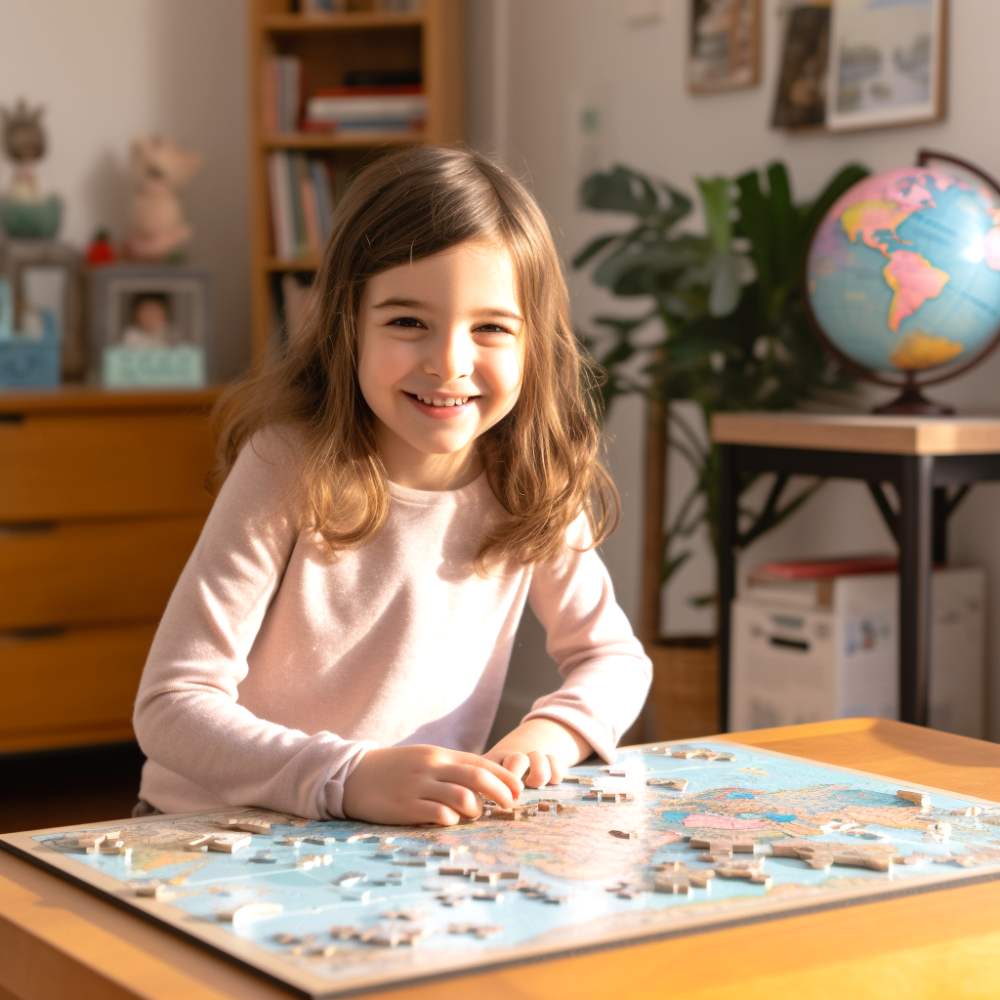
Learning Resources
We've already covered a few options in our links above, but if like most of us, you struggle to find the time in the day to read, here are some great podcasts that I listen to frequently:
- Montessori Education Podcast: Hosted by Jesse McCarthy, this podcast covers a wide range of Montessori topics, including practical tips, interviews with experts, and success stories.
- The Montessori Notebook Podcast: This podcast, hosted by Simone Davies, offers practical Montessori parenting advice and delves into topics such as creating a Montessori home environment and fostering independence in children.

Montessori Community and Support Groups
Connecting with other Montessori parents and educators can provide invaluable support, encouragement, and ideas. Local Montessori schools and parent groups are excellent resources for networking and sharing experiences. Online forums and social media groups, are also aplenty and the community feel they foster, can also be a great source of inspiration and support.
Finally, remember that the essence of Montessori at home is not about having all the right (or expensive) materials. It's about fostering a Montessori learning environment that nurtures your child's curiosity and independence. In the end, it's about focusing on their interests and continuously updating your learning materials to keep their engagement and love for learning alive.
Our Closing Thoughts
In summary, adopting a Montessori lifestyle at home can be transformative for you and your child. It lays a solid foundation for your child's lifelong learning, equipping them with critical life skills such as problem-solving, creativity, and confidence.Here are some key takeaways:
- Prepare a child-friendly space with the right furniture and toys.
- Create stimulating activities that cater to your child's developmental needs.
- Embrace the Montessori method's essence: independence, hands-on learning, and self-directed exploration.
- Tailor the Montessori approach to your child's unique needs and interests.
- Organize activities in trays and on shelves to foster a sense of ownership over the learning journey.
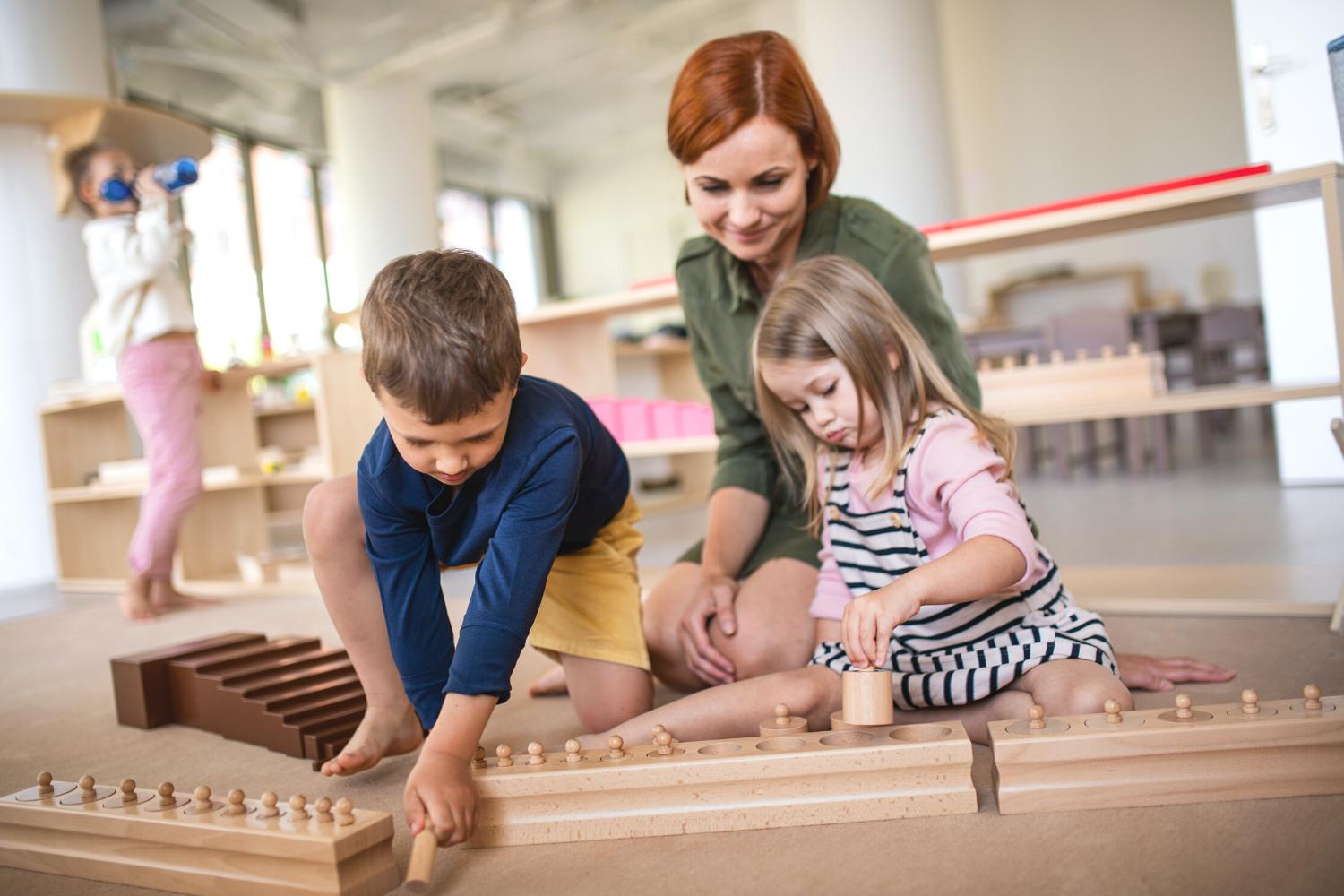
As you embark on this Montessori journey at home, remember:
- Keep the principles of independence, practicality, and adaptability at heart.
- Tailor the approach to your unique home environment and to your child's individual needs.
- Foster an atmosphere of encouragement and support.
I hope this guide has provided some valuable insights and practical ideas to help you on your journey. Remember, you're not alone in this—there's a whole community of Montessori parents out there, myself included, eager to share experiences and learn from each other. As you navigate the world of Montessori at home, remember to savor the journey, cherish the moments, and always keep your child's love for learning alive.
Until next time, continue to cultivate your child's curiosity, nurture their independence, and embrace the joy of a Montessori lifestyle at home. Here's to a brighter future for your child's education and to your fulfilling journey as a Montessori parent!


